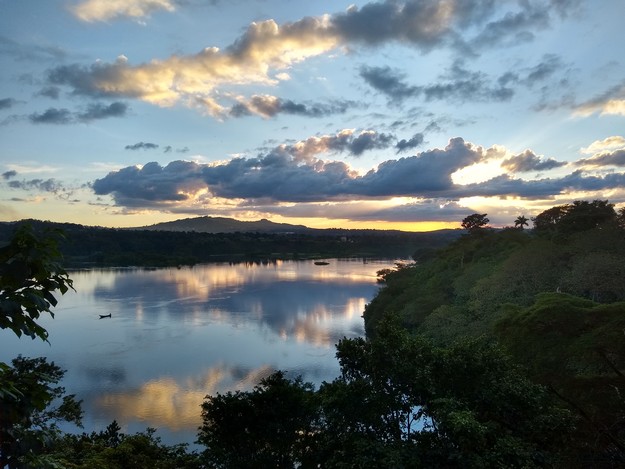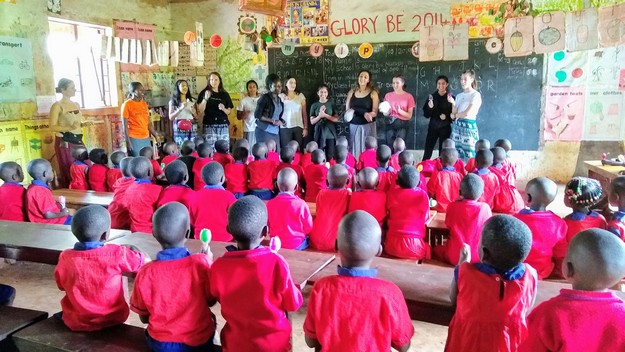Uganda 2019
During October Half Term, nine Upper Sixth Formers, visited Uganda for ten days. Over the course of the trip, they visited all the charities that Withington has supported, and visited annually, for the past six years.
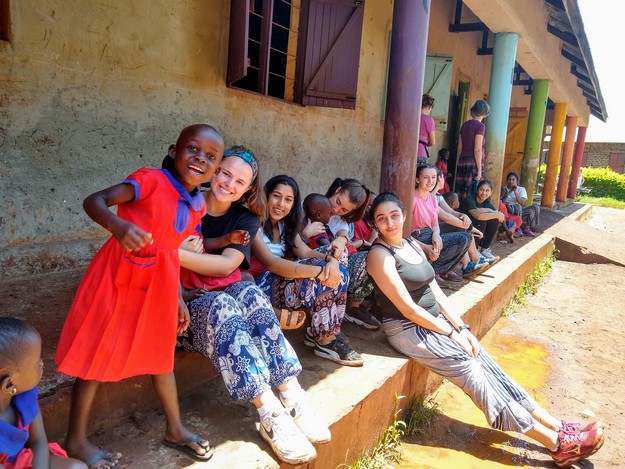
Daisy writes:
Prior to our trip to Uganda in October we kickstarted the project by meeting weekly to organise various charity events to raise as much as we could to take to Uganda. After a few meetings we decided as our first charity event we would do a collective triathlon to Uganda. This seemed like a great idea of mine until it was established that Uganda was not in fact next to Morocco as I had thought and so our team was set quite the challenge with a total distance of 6,000 miles. Nevertheless, over the course of the year we completed 500 miles each in order to successfully meet this target. Further on, we also organised cake sales, an Easter egg hunt and the Promises Auction. In this process we raised over £7,000 which we were then able to donate to the organisations we visited in Uganda. We’d like to thank everyone who contributed to this, your donations in our charity events along with bringing in clothes and other donations has been greatly appreciated and we couldn’t have done it without you.
We thought you would like to see where your money has gone so we are going to tell you a bit more about the projects that the school supports and a bit more about why we have been working so hard to raise money for them this year.
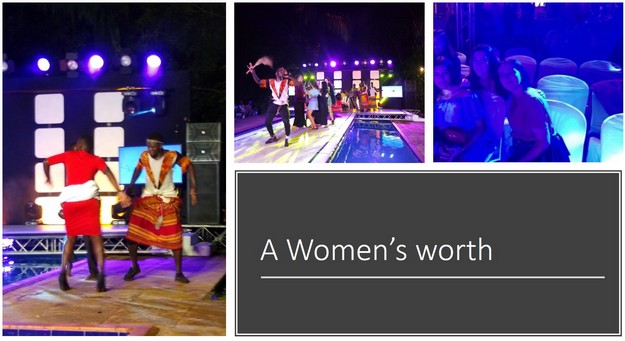
A Women’s Worth
We spent our first proper evening in Uganda at a fashion show for the charity A Women’s Worth. The ‘Slum to Catwalk’ project is all about getting women into business as a way of supporting their families and lifting them out of poverty. There were some very interesting outfits and this was a really positive introduction to the work done by so many charities in the area.
Tala continues:
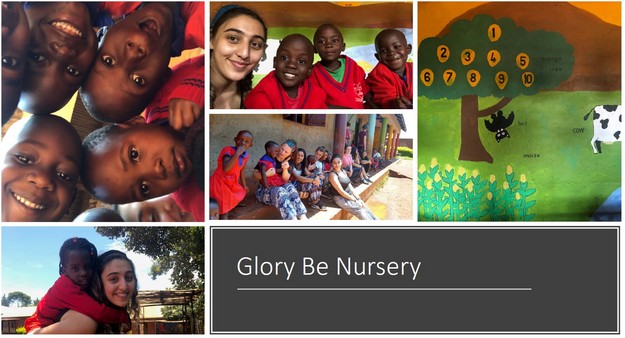
Glory Be Nursery
Glory Be Nursery was established by the Small Steps Foundation to provide early years education for some of the poorest children in the local area. Some of the 200-odd children who attend the nursery are orphans and most of them are living in poverty or have been identified as vulnerable. What is unique about this nursery is that it helps to educate the children and the wider community on the subject of disability, with the aim of diminishing the stigma surrounding disabilities which is rooted within Ugandan culture.
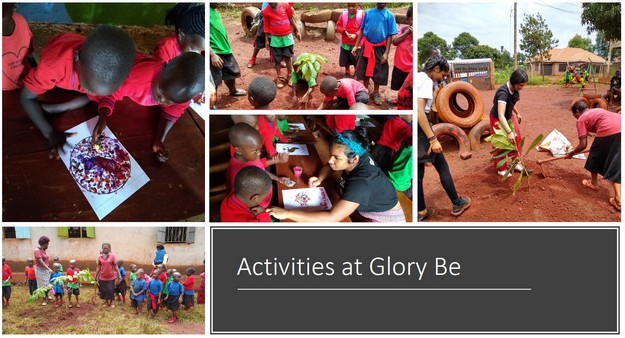
Small Steps Foundation is a registered UK charity who support, educate and promote the inclusion of young children with learning disabilities in Uganda. The charity works in conjunction with Buwenda Women in Action, who run Glory Be nursery, and helps to provide a safe and enabling environment for the children.
What makes Glory Be Nursery different is the interactive means of learning, which ensures that all children can participate and enjoy learning. There is a class for young children with Special Educational Needs, called the SEN nursery class, which is comprised of children who have previously been excluded from education or deemed unable to learn in a mainstream environment. The Nursery is able to offer an accommodating environment, free from stigma, that supports each child’s individual needs. The aim is by keeping those children in the local community, interacting with their peers, they will build up a support network they can still rely on as adults.
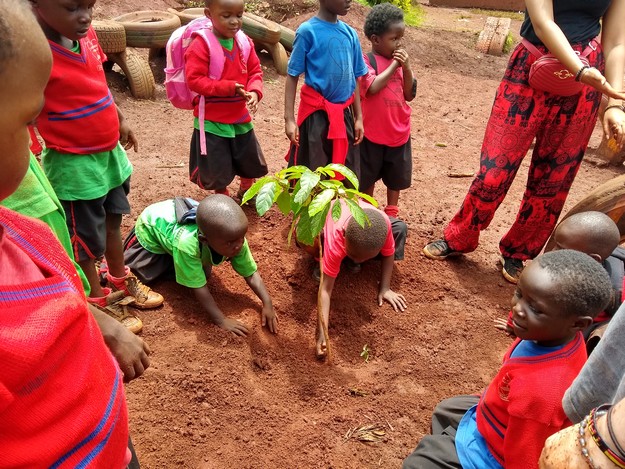
We spent time painting a mural along the wall of baby class, depicting a sunset with animals wandering in fields, and painted the dark walls of the teacher’s office a bright mix of colours to lighten up their workspace.
Diya continues:
Whilst we visited the nursery, we saw each of the classes singing and dancing as a means to learn new information. This was a refreshing and heart-warming sight, with all the children participating and energetically singing along.
We also gave various lessons to the different classes within the nursery. With the middle class we made maracas with them out of rice, plastic eggs and plastic spoons. This proved a huge success and the children loved it, we sang various nursery rhymes with them, while they shook their shakers to the beat.
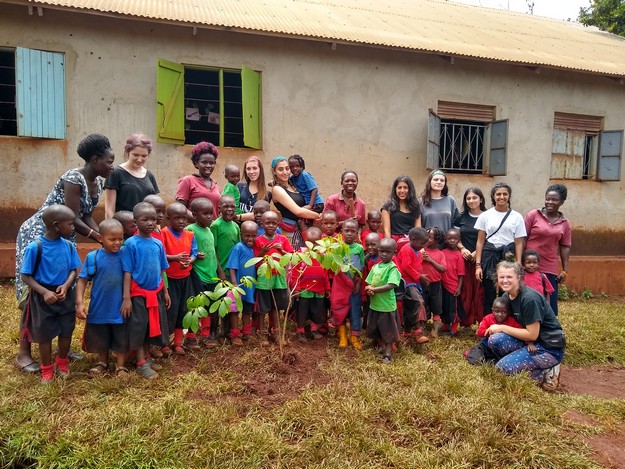
We taught the older children about the importance of trees and taught them how to paint trees following the outline of their hands. The children loved this, and some were very artistic making extremely creative paintings. We also taught them a song encouraging them to appreciate trees and finished off by planting some new trees within the nursery grounds with them. The children were fascinated by this but provided little help as they were busy climbing us instead! The trees will provide shade and shelter but also fruits, hopefully for many years to come.
We gave the baby class outlines of different animals and let them finger paint them. Most of the children produced neat pretty paintings, however, some decided to mix all the colours of paint together making a big brown blob on the page.
Risha continues:
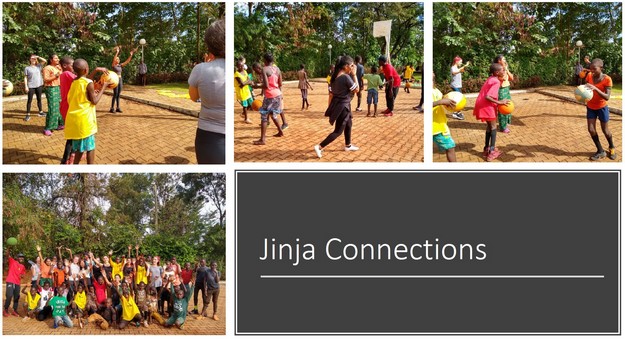
Jinja Connections was one of the first charities we visited. It is a charity for street boys, they operate in multiple different venues. The first place we saw was where the boys played basketball. We started off by learning about the Centre and how the boys meet. We found out that the people who lead the charity drive around the area and pick up the kids from the street and bring them to the Centre. The kids are aged from as young as 3 up to the age of 18.
We started by playing some drills with the boys and then in a basketball game of boys v girls we drew 2-all. We were really happy to see this great outlet for the kids who otherwise live on the streets and don’t have much to do. Even the younger kids were surprisingly very capable of jumping high enough to dispossess much taller opposition – ie, me. Truly embarrassing and I will never live that down considering the boy who plucked the ball out of the air above me was only 7!
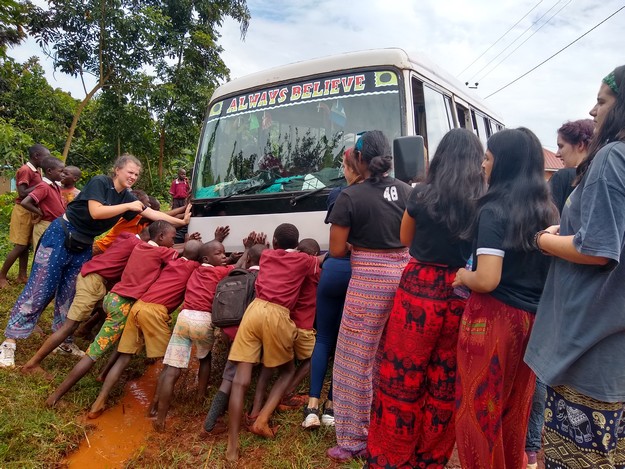
Further on in the week we visited another centre in which Jinja Connections operate. Here, the boys are more within a school environment, they learn throughout the day and are provided lunch. We arrived at the centre and started by meeting the boys and introducing ourselves. This was quite difficult as most the boys did not speak English. Taking this into account, we brought caps so we could enjoy an activity with them. We provided paint so the boys could decorate the caps as they wished, which went down very well since it was something they could take back with them.
We took many of the old clothes donated by Withington families and they went to children who literally live on the streets, so a massive thank you on their behalf. We used some of the money we raised to provide Jinja Connections with some new storage for donations and also to get their computers fixed.
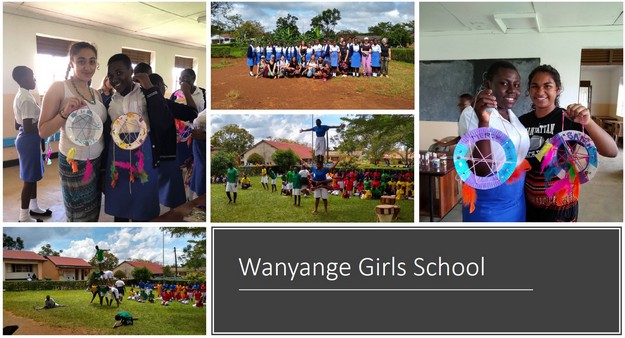
Sanj continues:
Wanyange Girls’ School (the Ugandan WGS!): This is a private girls’ school in Uganda which, while having similarities to Withington in the sense of the girls’ strong work ethic and their aspirations to be lawyers, dentists and medics, was also worlds apart. The girls’ days started at the early morning of 5am and run all the way till 10 in the evening. The school being a boarding school had much influence on the girls’ lives and there are some very strict rules such as no phones and, even more incomprehensible, no boyfriends! Our visits to the school definitely led to a deep appreciation of how lucky we all are for not only pastoral support but the wider workings of our personal communities that support and guide us in order to form holistic and well-rounded individuals.
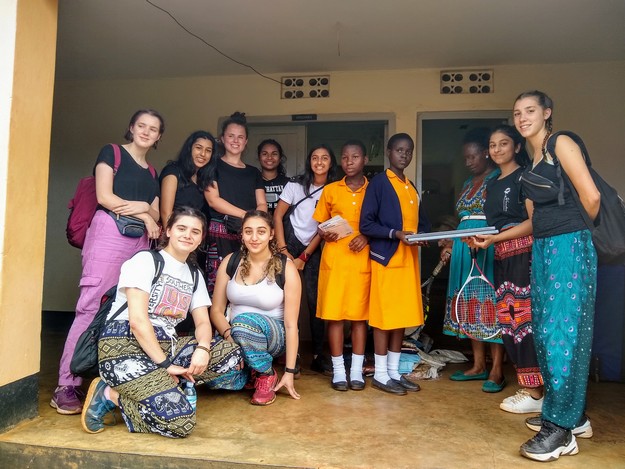
Personally, the things that took me aback the most was the use of sanitary pads among the students. Despite being a private girls’ school, all the students had to stitch their own reusable pads and if that was not an option the use of banana leaves, or not going to school was the only fallback. I was astounded by how these girls with these amazing ambitions, who were so intelligent and lively and had their whole life ahead of them just like me, had their education inhibited purely because of the biomechanics of a women’s body. It was overall an eye-opening and humbling experience and gave us a greater appreciation of the simple things we take for granted such as sanitary products.
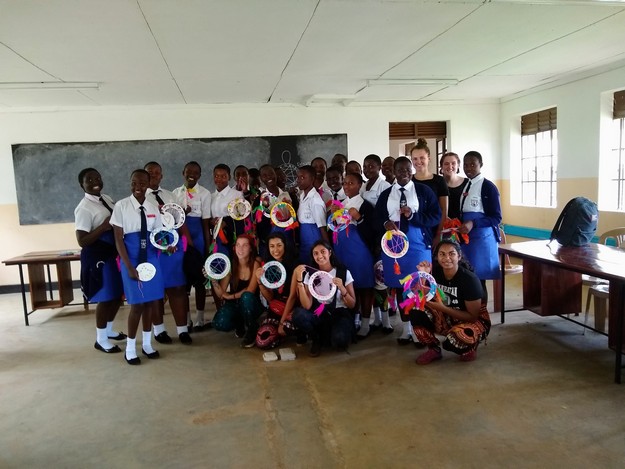
During the day there, we made dreamcatchers with students a similar age to us, an activity that gave us a great opportunity to really get to know the girls and realise how similar we are in many ways. They showed us some of their dance and gymnastics skills in an incredible display and we attempted to provide them with some entertainment too.
Even though the school is a private school they do not have anywhere near the same facilities as we do so we took a number of donations for them including stationery, re-usable sanitary products and a lot of sports equipment, much of which was donated by Withington pupils and their families so a massive thank you from us and from them.
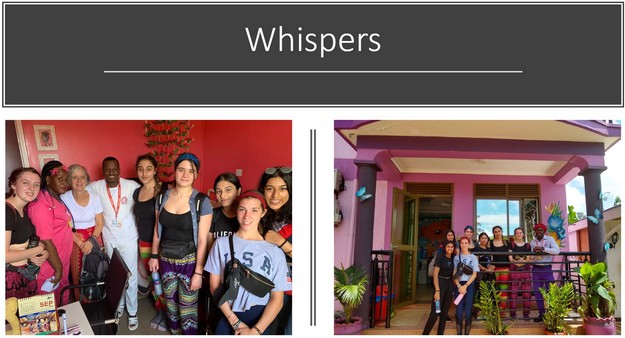
Imaan continues:
Another wonderful charity that we supported was a local children’s hospital called Whispers in Jinja. Here, we received a tour of the various departments of the building in order to gain an insight into the work that it does. This hospital carries out various medical procedures, including blood transfusions for children with low blood count from malaria or malnutrition, dressing burns and scalds and taking care of malnourished children, and this is just a small number of examples amongst other amazing work that the hospital does. Perhaps the biggest sector in the hospital is the maternity department that opened very recently in 2018. This department offers ante-natal classes, full twenty-four-hour monitoring before delivery, ultrasounds and more.
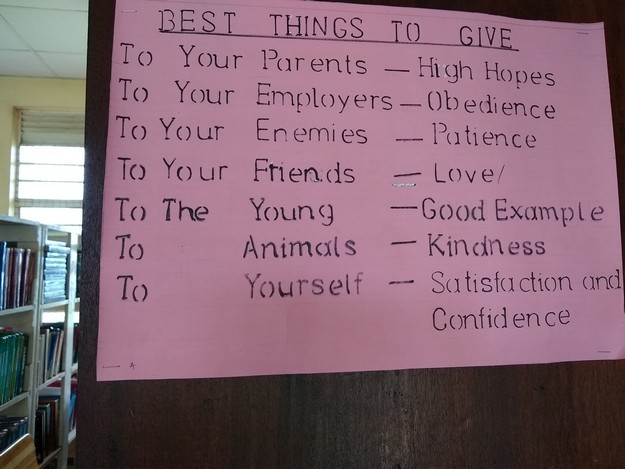
On talking to the medical director and hospital manager, we were all incredibly pleased that the charges for these procedures are set at a level that most families can afford and that the patients are able to remain within the hospital until they are fully healed. More than this, we were all happy to be told how the hospital and its staff wish to “combine good, healthy services with laughter, love and happiness”, and this was extremely evident in the compassion that was shown to the patients by the dedicated hospital staff.
It’s a really valuable charity and we are pleased to tell you that the money raised in school for this cause is being used to fund malaria medication and should provide enough medication to save the lives of 300 babies who visit Whispers.
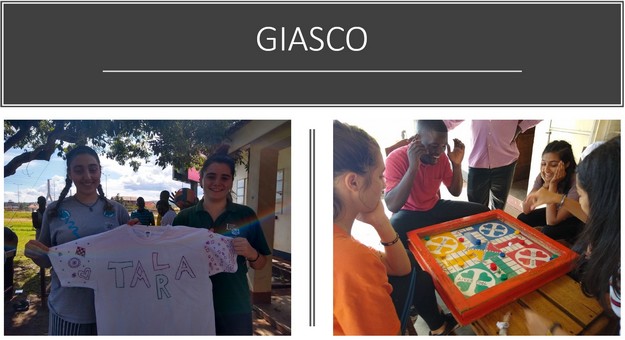
Maya continues:
One of the first places we visited was GIASCO, a home for boys that used to live on the street. It’s a charity the school have been visiting for a while and two of the founders are ex-WGS girls. The boys all lived at the house we visited and went to school every day except for Sunday. They were similar ages to us, from around 16-18. Most of the boys have ended up at GIASCO because of difficult living conditions at home, a lot are from abusive homes or are orphaned. The charity are currently doing a big push to get many of the boys back to living with their families, where possible with parents and where not, with aunts and uncles. Their aim is to get all the boys back home eventually.
Their schooling means that many of the boys speak really good English so we were able to chat and get to know them on a new level. We played volleyball and football with them and listened to music, to our surprise they knew a lot of the songs we knew especially Beyoncé! It was really nice to be able to connect with them and even though our lives have obviously been very different it’s great to know that actually we have a lot in common.
We took some of the clothes and shoes donated through school with us and the money that we raised throughout the year was used to pay for 6 months of a social worker. With the new direction social workers are going to be a key part of making sure that the boys settle properly back at home and giving them ongoing support.
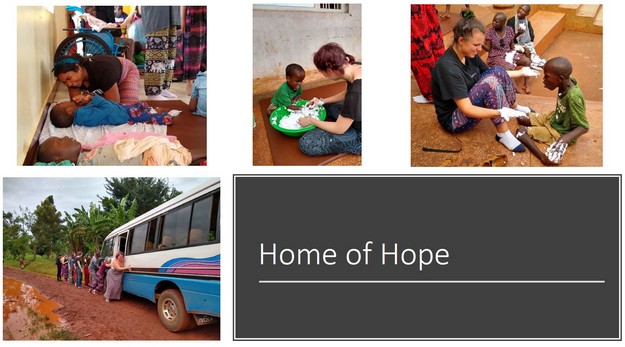
Katie continues:
We visited Home of Hope – a facility that houses and cares for children with disabilities.
This was one of the most emotionally challenging parts of the trip. In Uganda, people with disabilities are frequently abandoned by their families and Home of Hope is a refuge for them.
Initially, many of us found it very difficult and upsetting being there. But this changed when we got out the activities we’d brought to play. We blew bubbles and played with balloons and the children’s faces immediately lit up. By far the most popular thing we brought was the shaving foam – the children were entranced by the texture of it and by the end of our time there, we and the children were completely covered in it.
Seeing all the children smiling made us realise that this truly was a place of hope. We were reminded how lucky we are for the facilities and care we take for granted back at home and we realised how important it is to support places like Home of Hope as they are transformative for the children there.
We were also able to give the facility clothes and mattresses which the staff were incredibly appreciative of and this was made possible thanks to Withington donations.
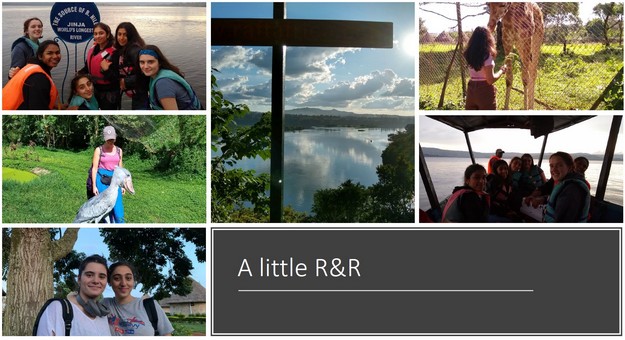
Tara concludes:
However, our trip didn’t consist of just charity work and we made sure we had time for a bit of rest and relaxation too. On the Friday evening, we went on a small river boat cruise across Lake Victoria. With pizza and fizzy drinks in hand, we set off just before sunset. We learned about the history of the lake and how it was renamed when Queen Victoria came to visit and how it’s the third largest lake in the world. On the cruise we saw may animals including monkeys and the local Ugandan birds such as cranes. However, the highlight was when we got to the source of the River Nile. We got off the boat at a small man-made island and took pictures with the sign as we pointed out the swirling water which appeared to be the source. Explorers spent years trying to trace the source of the Nile to an exact point so it was amazing to get the opportunity to visit it while we were close by.
Our final two days in Uganda were spent at the Uganda Wildlife Conservation Centre in Entebbe. We stayed in ‘bandas’, which are little huts, inside the wildlife centre with giraffes and ostriches living just next door to us. We also did a behind the scenes tour of the centre, feeding many of the animals: rhino, elephants, giraffes, monkeys and chimps and well as getting a closer look at some of the birds and big cats with special access inside some of the enclosures.
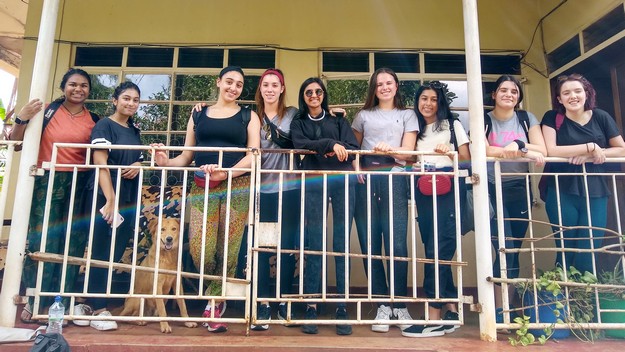
There was a beach connected to Lake Victoria which is where we spent a few hours on the last day sunbathing and having ice cream to make us feel like we had also had a holiday.
We would like to say once again, a massive thank you to the school community for your support with fundraising and your incredibly generous donations.
We would also like to wish the Gambia luck as they head out in December to support the projects over there too.
